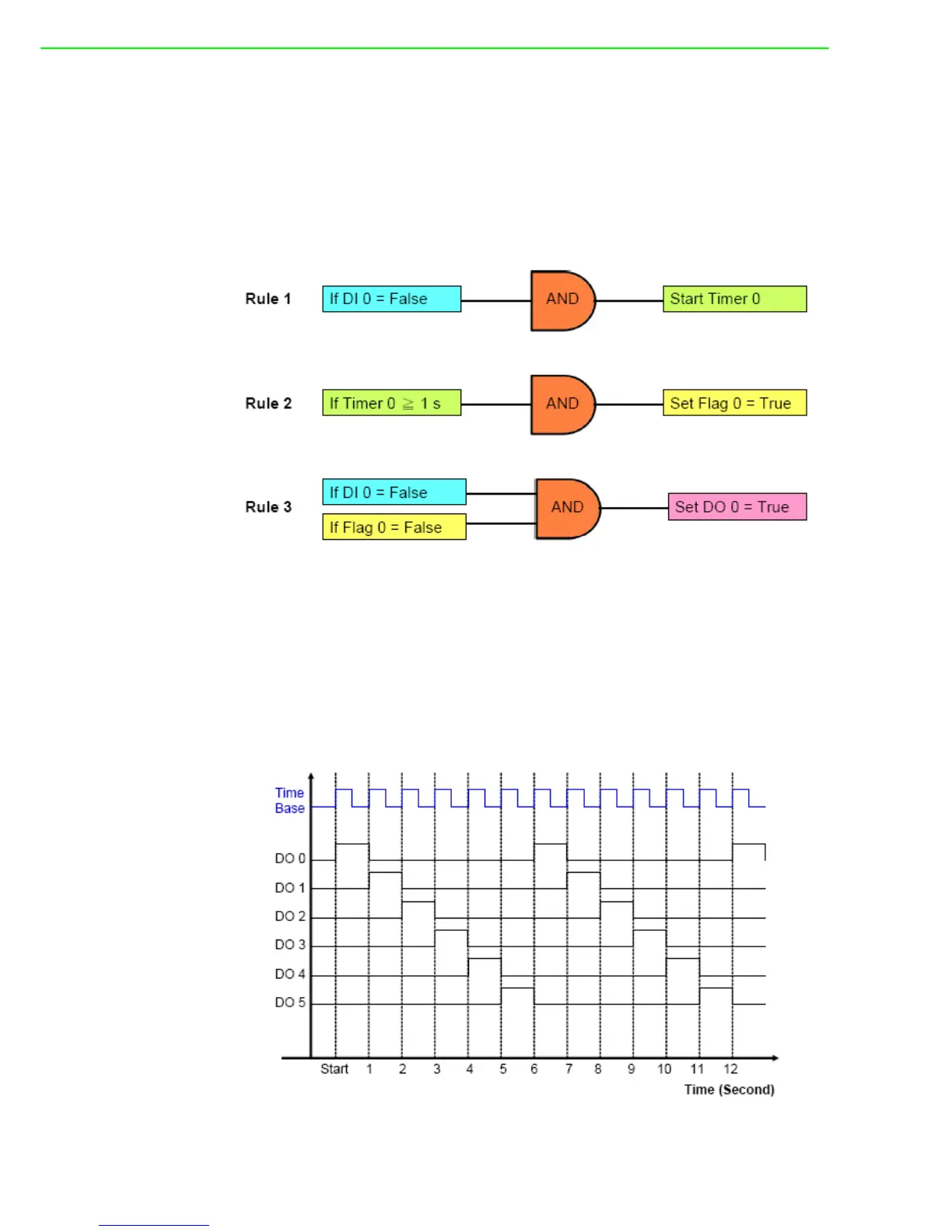ADAM-6200 User Manual 116
When you use GCL to achieve falling edge application, 3 logic rules, 1 Internal Timer
(Timer 0) and 1 Internal Flag (Flag 0) are needed. For example, with logic rule 3, DO
0 value is controlled by DI 0 and Flag 0. Flag 0 value is logic False at beginning.
When falling edge occurs (DI value changes from logic high to logic low), DO will be
activated (logic rule 3 are satisfied), and Timer 0 starts to count time (logic rule 1 are
satisfied). After Timer 0 counts up to the specific time interval (1 second), Flag 0 will
become logic True by logic rule 2, making DO 0 value logic low (logic rule 3 are not
satisfied). The GCL architecture is similar to the ladder diagram.
8. Sequential Control (Turn On and Off in Sequence Continuously)
This type of automation application is similar to the 3rd application we have intro-
duced. They are both sequential control applications. For example 3, DO channel will
keep its value after it is turned on. In example 8 here, after DO channel is turned on,
it will be turned off after a specific time. You can see the time chart for this application
as below. There is one time base needed to control the digital output sequential
action. In this example, the period of the time base to turn off one DO and turn on the
next-door DO is 1 second.

